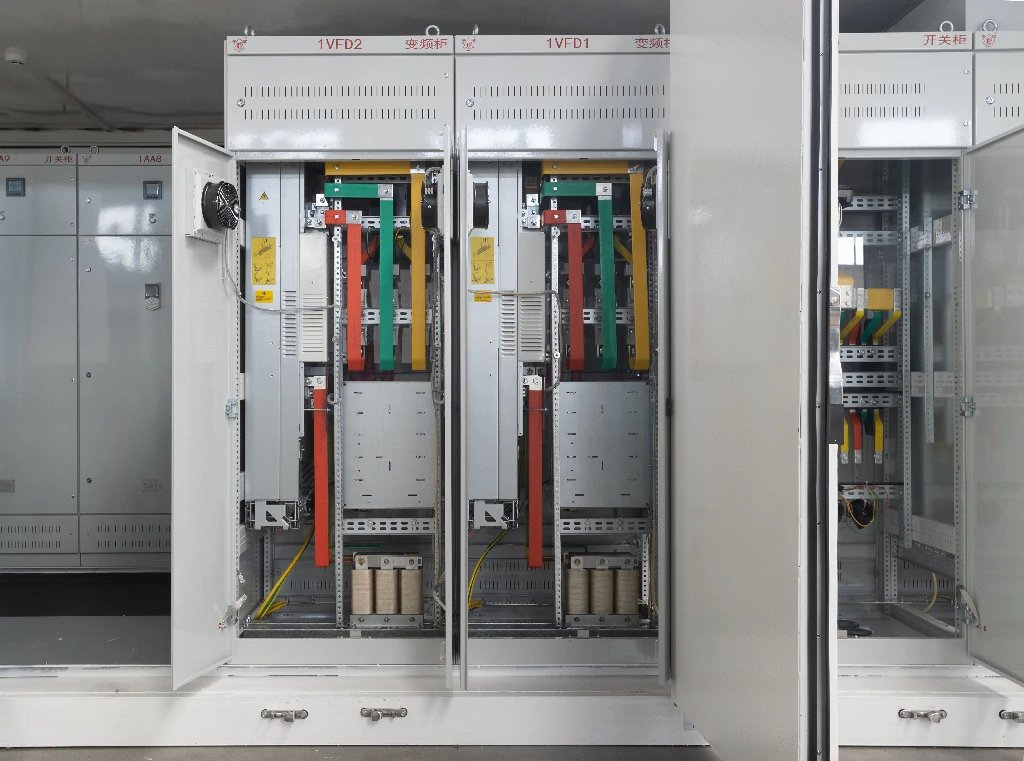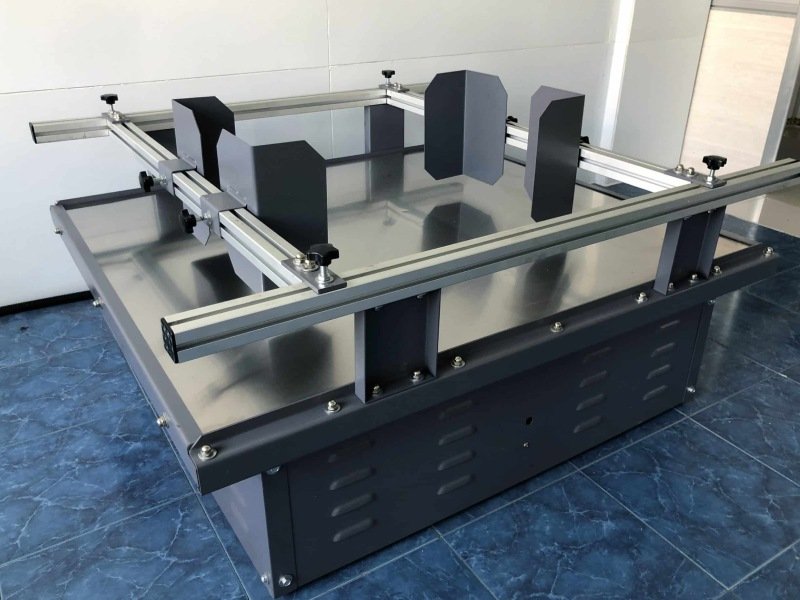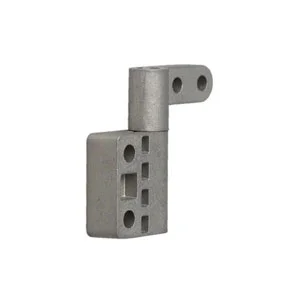Electrical cabinets are critical for housing electrical components, protecting them from environmental hazards, unauthorized access, and physical damage. The handles on these cabinets are not merely aesthetic; they serve as the primary interface for accessing the enclosure, ensuring security, ease of use, and compliance with safety standards such as those set by the National Electrical Manufacturers Association (NEMA) or the International Electrotechnical Commission (IEC). Below, we explore 10 essential handle types, including the six specified (concealed handles, folding pocket handles, lever handles, U-shape handles, pocket pulls, and rotary handles) and four additional types commonly used in electrical cabinets: T-handles, wing handles, cam lock handles, and swing handles. Each section details the handle’s design, applications, advantages, and considerations, providing a comprehensive guide for selecting the right hardware.
Concealed Handles
Design and Functionality
Concealed handles, also known as flush or recessed handles, are designed to sit flush with the surface of the electrical cabinet, minimizing protrusion. These handles are often integrated into the door panel, featuring a low-profile mechanism that may involve a push-to-release or pull-to-open action. Typically made from materials like stainless steel, zinc alloy, or durable plastics, concealed handles are engineered for environments where external protrusions could pose a safety hazard or aesthetic concern.
Εφαρμογές
Concealed handles are ideal for electrical cabinets in high-traffic areas, such as data centers, manufacturing facilities, or public utilities, where protruding handles could be damaged or cause injury. They are also used in enclosures requiring a sleek, modern appearance, such as those in commercial buildings or cleanroom environments. Their flush design makes them suitable for NEMA 4X or IP66-rated enclosures, which demand high resistance to dust, water, and corrosion.
Πλεονεκτήματα
- Ασφάλεια: The flush design reduces the risk of snagging clothing or equipment, enhancing workplace safety.
- Αισθητική: Provides a clean, streamlined look, ideal for visible installations.
- Ανθεκτικότητα: Resistant to physical damage due to their recessed nature.
- Ασφάλεια: Often paired with locking mechanisms, such as key or combination locks, to prevent unauthorized access.
Considerations
Concealed handles may require more complex installation, as they need to be precisely fitted into the cabinet door. Accessibility can be a concern for users with limited dexterity, as some designs require a firm push or pull to engage. Regular maintenance is necessary to ensure the internal mechanisms remain free of debris, particularly in dusty or outdoor environments.
Folding Pocket Handles
Design and Functionality
Folding pocket handles are retractable handles that fold into a recessed pocket when not in use, combining the benefits of concealed and protruding handles. They typically consist of a metal or plastic handle that pivots out from a recessed compartment, allowing the user to grip and pull the cabinet door. Once released, the handle folds back into the pocket, maintaining a flush surface. These handles often incorporate locking features, such as padlocks or integrated key locks.
Εφαρμογές
Folding pocket handles are commonly used in electrical cabinets for industrial settings, such as power distribution units, control rooms, or telecommunications enclosures. Their ability to fold away makes them suitable for cramped spaces or areas with heavy machinery, where protruding handles could be knocked or damaged. They are also popular in mobile or transportable enclosures, as the folding mechanism prevents damage during transit.
Πλεονεκτήματα
- Space-Saving: The folding design minimizes space requirements when the handle is not in use.
- Ευελιξία: Combines ease of access with a flush profile, suitable for various environments.
- Robustness: Often constructed from heavy-duty materials like stainless steel, ensuring longevity in harsh conditions.
- Security Options: Many models support padlocks or key locks, enhancing cabinet security.
Considerations
The folding mechanism may wear over time, particularly in high-use environments, requiring periodic inspection and lubrication. Installation can be more involved than for standard handles, as the pocket must be precisely cut into the cabinet door. Users should ensure the handle’s locking mechanism meets the required security level, especially for cabinets housing critical infrastructure.
Lever Handles
Design and Functionality
Lever handles feature a lever arm that rotates or pivots to open the cabinet door, often resembling door handles found in residential or commercial buildings. These handles are typically made from metal alloys, such as zinc or stainless steel, and may include a locking cylinder for added security. The lever design provides a comfortable grip and requires minimal force to operate, making it ergonomic for frequent use.
Εφαρμογές
Lever handles are widely used in electrical cabinets for control panels, server racks, and utility enclosures. They are particularly common in environments where operators need quick and easy access, such as in manufacturing plants or data centers. Lever handles are also suitable for NEMA 12 or IP54-rated enclosures, which protect against dust and light splashing.
Πλεονεκτήματα
- Ergonomics: The lever design allows for easy operation, even with gloved hands or in low-visibility conditions.
- Accessibility: Ideal for users with limited hand strength, as they require less force than some other handle types.
- Ασφάλεια: Many lever handles integrate key or electronic locks, providing robust protection.
- Ανθεκτικότητα: Constructed from corrosion-resistant materials, suitable for indoor and outdoor use.
Considerations
Lever handles protrude from the cabinet surface, which may pose a risk in high-traffic areas or tight spaces. They may also be less suitable for enclosures requiring high ingress protection (e.g., NEMA 4X), as the protruding lever can be a point of water or dust entry if not properly sealed. Regular maintenance is needed to ensure the lever mechanism remains smooth and functional.
Χειρολαβές σχήματος U
Design and Functionality
U-shape handles, also known as bridge or bow handles, feature a U-shaped bar attached to the cabinet door at two points, forming a sturdy grip. Typically made from stainless steel, aluminum, or reinforced plastic, these handles are designed for heavy-duty applications where a firm grip is essential. Some U-shape handles include locking mechanisms, such as key locks or latches, to secure the cabinet.
Εφαρμογές
U-shape handles are prevalent in electrical cabinets for industrial environments, such as power plants, substations, or heavy machinery control units. Their robust design makes them suitable for large or heavy cabinet doors, where significant force may be required to open or close the enclosure. They are also used in outdoor enclosures, as their materials are often resistant to corrosion and weathering.
Πλεονεκτήματα
- Strength: The U-shape design provides a strong, reliable grip, ideal for heavy doors.
- Ευκολία χρήσης: Allows users to apply force with both hands if needed, enhancing accessibility.
- Ανθεκτικότητα: Made from rugged materials, resistant to physical and environmental stress.
- Ευελιξία: Available in various sizes and finishes to match different cabinet designs.
Considerations
The protruding nature of U-shape handles makes them unsuitable for cramped or high-traffic areas, where they could be damaged or cause injury. They may also collect dust or debris in outdoor settings, requiring regular cleaning. For high-security applications, ensure the handle’s locking mechanism meets industry standards, such as UL or IEC requirements.
Pocket Pulls
Design and Functionality
Pocket pulls, sometimes called edge pulls or finger pulls, are small, recessed handles installed along the edge of a cabinet door or drawer. They feature a shallow groove or ledge that allows the user to insert their fingers and pull the door open. Made from materials like aluminum, stainless steel, or plastic, pocket pulls are designed for minimalism and functionality, often incorporating a push-to-open mechanism for handleless aesthetics.
Εφαρμογές
Pocket pulls are used in electrical cabinets where a minimalist or handleless appearance is desired, such as in modern control rooms, office environments, or cleanroom facilities. They are also suitable for compact enclosures, where protruding handles would be impractical. Pocket pulls are common in NEMA 1 or IP20-rated enclosures, used in indoor, low-hazard settings.
Πλεονεκτήματα
- Minimalist Design: Provides a sleek, unobtrusive look, ideal for modern aesthetics.
- Space Efficiency: The recessed design saves space and reduces the risk of damage.
- Ευκολία εγκατάστασης: Requires minimal modification to the cabinet door, simplifying setup.
- Low Maintenance: Few moving parts reduce the need for regular upkeep.
Considerations
Pocket pulls may be less ergonomic for frequent use, as they offer limited grip space. They are not ideal for heavy or large cabinet doors, which require more substantial handles. In high-security applications, pocket pulls may need to be paired with separate locking mechanisms, as they typically lack integrated locks. Accessibility for users with larger hands or limited dexterity should also be considered.
Rotary Handles
Design and Functionality
Rotary handles, also known as twist or turn handles, operate by rotating a knob or lever to engage or disengage the cabinet’s locking mechanism. These handles are often cylindrical or disc-shaped, made from durable materials like zinc alloy, stainless steel, or reinforced plastic. Many rotary handles incorporate key locks, combination locks, or tool-operated mechanisms (e.g., requiring a screwdriver or special key) for enhanced security.
Εφαρμογές
Rotary handles are commonly used in electrical cabinets requiring high security, such as those housing critical infrastructure, telecommunications equipment, or hazardous electrical components. They are suitable for NEMA 4 or IP65-rated enclosures, which protect against water, dust, and tampering. Rotary handles are also used in outdoor or harsh environments, where their robust construction ensures reliability.
Πλεονεκτήματα
- High Security: The rotary mechanism often includes advanced locking options, deterring unauthorized access.
- Compact Design: Takes up minimal space, ideal for smaller enclosures.
- Environmental Resistance: Made from corrosion-resistant materials, suitable for outdoor use.
- Ευελιξία: Available in various configurations, including keyed, keyless, or tool-operated models.
Considerations
Rotary handles may require more effort to operate than lever or U-shape handles, which could be a drawback for frequent access. The locking mechanism may need periodic maintenance to prevent jamming, especially in dusty or humid conditions. For applications requiring rapid access, ensure the rotary handle’s design allows for quick operation without compromising security.
T-Handles
Design and Functionality
T-handles are shaped like the letter “T,” with a vertical stem and a horizontal bar that the user grips and turns to open the cabinet. Typically made from stainless steel, zinc alloy, or plastic, T-handles often include a locking cylinder or padlock hasp for security. The turning action engages a latch or cam mechanism inside the cabinet, securing or releasing the door.
Εφαρμογές
T-handles are used in electrical cabinets for utility boxes, server racks, and industrial control panels. They are particularly common in environments where a balance of security and accessibility is needed, such as in telecommunications or HVAC control enclosures. T-handles are suitable for NEMA 3R or IP54-rated enclosures, offering protection against rain and dust.
Πλεονεκτήματα
- Ευκολία χρήσης: The T-shape provides a comfortable grip, allowing quick operation.
- Ασφάλεια: Locking options, such as key or padlock, enhance cabinet protection.
- Ανθεκτικότητα: Constructed from robust materials, resistant to wear and tear.
- Compactness: The design is less obtrusive than U-shape handles, suitable for smaller cabinets.
Considerations
T-handles protrude from the cabinet surface, which may be a drawback in high-traffic areas. The locking mechanism may require regular maintenance to ensure smooth operation. For outdoor applications, ensure the handle’s material and finish are resistant to corrosion and UV exposure.
Wing Handles
Design and Functionality
Wing handles, also called wing knobs or butterfly handles, feature a wing-like shape that allows the user to grip and turn the handle to open the cabinet. Made from materials like plastic, zinc alloy, or stainless steel, wing handles are often used in applications requiring tool-free operation. Some models include key locks or require a special tool to operate, enhancing security.
Εφαρμογές
Wing handles are used in electrical cabinets for lightweight or medium-duty applications, such as control boxes, small utility enclosures, or indoor server racks. They are suitable for NEMA 1 or IP20-rated enclosures, where minimal environmental protection is needed. Wing handles are also common in temporary or portable enclosures, due to their ease of use.
Πλεονεκτήματα
- Simplicity: The wing design allows for quick, tool-free operation.
- Cost-Effective: Generally less expensive than more complex handle types.
- Ελαφρύ: Ideal for smaller or less heavy-duty cabinets.
- Customizable: Available with or without locks, depending on security needs.
Considerations
Wing handles are less suitable for high-security or heavy-duty applications, as they may not withstand significant force or tampering. They are also less ergonomic for frequent use, as the wing shape may be uncomfortable for prolonged gripping. For outdoor use, ensure the material is weather-resistant to prevent degradation.
Cam Lock Handles
Design and Functionality
Cam lock handles use a rotating cam mechanism to secure the cabinet door, typically operated by a key, tool, or thumb-turn. These handles are compact and often flush or semi-flush with the cabinet surface, made from materials like zinc alloy, brass, or stainless steel. The cam engages a latch or strike plate inside the cabinet, providing a secure closure.
Εφαρμογές
Cam lock handles are used in electrical cabinets for telecommunications, vending machines, or small control panels. They are ideal for applications requiring compact, secure locking, such as NEMA 12 or IP55-rated enclosures. Cam lock handles are also common in indoor settings where aesthetics and space are priorities.
Πλεονεκτήματα
- Compact Design: Takes up minimal space, ideal for small enclosures.
- Ασφάλεια: Key or tool-operated models provide robust protection.
- Ευελιξία: Available in various configurations, including flush or protruding designs.
- Ευκολία εγκατάστασης: Simple to install, requiring minimal door modification.
Considerations
Cam lock handles may not be suitable for heavy-duty cabinets, as the cam mechanism can be less robust than multi-point locking systems. Keyed models may pose a risk if keys are lost, requiring a backup access plan. Regular maintenance is needed to ensure the cam and latch remain aligned and functional.
Swing Handles
Design and Functionality
Swing handles feature a pivoting handle that swings outward to open the cabinet, often incorporating a multi-point locking system for enhanced security. Made from materials like stainless steel, zinc alloy, or plastic, swing handles typically include key locks, combination locks, or padlock hasps. The swinging motion engages or disengages the locking rods inside the cabinet, securing the door at multiple points.
Εφαρμογές
Swing handles are used in electrical cabinets for critical infrastructure, such as power distribution panels, telecommunications enclosures, or data centers. They are suitable for NEMA 4 or IP66-rated enclosures, offering high protection against environmental hazards and tampering. Swing handles are also common in large cabinets requiring robust security.
Πλεονεκτήματα
- High Security: Multi-point locking systems deter unauthorized access.
- Ανθεκτικότητα: Made from heavy-duty materials, suitable for harsh environments.
- Ergonomics: The swinging motion is easy to operate, even for large doors.
- Αισθητική: Provides a professional, industrial look, ideal for visible installations.
Considerations
Swing handles are more complex and expensive than other handle types, which may be a factor for budget-conscious projects. They require precise installation to ensure the multi-point locking system functions correctly. In high-traffic areas, the swinging handle may pose a minor obstruction when extended, requiring careful placement.
Material and Finish Considerations
The choice of material and finish for electrical cabinet handles significantly impacts their performance, longevity, and suitability for specific environments. Common materials include:
- Ανοξείδωτο χάλυβα: Offers excellent corrosion resistance, ideal for outdoor or marine environments (e.g., NEMA 4X enclosures).
- Κράμα ψευδαργύρου: Provides a balance of strength and cost-effectiveness, suitable for indoor or mild outdoor use.
- Αλουμίνιο: Lightweight and corrosion-resistant, often used in portable or aesthetic-focused enclosures.
- Plastic/Reinforced Polymers: Cost-effective and resistant to corrosion, used in lightweight or non-conductive applications.
Finishes, such as powder coating, chrome plating, or anodizing, enhance durability and aesthetics. For example, powder-coated handles resist chipping and fading, while chrome-plated handles offer a polished look but may corrode in humid conditions. The choice of material and finish should align with the cabinet’s NEMA or IP rating, environmental conditions, and aesthetic requirements.
Installation and Maintenance Tips
Proper installation and maintenance are critical to ensuring the longevity and functionality of electrical cabinet handles:
- Installation: Follow manufacturer guidelines for hole placement and torque specifications. Ensure proper alignment of locking mechanisms, especially for multi-point systems like swing handles. Use appropriate sealing gaskets for outdoor enclosures to maintain ingress protection.
- Maintenance: Regularly inspect handles for wear, corrosion, or debris buildup. Lubricate moving parts, such as folding pocket or rotary handles, with non-conductive lubricants. Replace worn or damaged handles promptly to maintain security and accessibility.
- Συμμόρφωση: Verify that handles meet relevant standards, such as UL, IEC, or NEMA, particularly for locking mechanisms and environmental resistance.
Selecting the Right Handle for Your Electrical Cabinet
Choosing the appropriate handle depends on several factors:
- Environment: Outdoor or harsh environments (e.g., NEMA 4X, IP66) require corrosion-resistant materials and sealed designs, such as concealed or rotary handles. Indoor settings (e.g., NEMA 1, IP20) allow for more aesthetic options like pocket pulls.
- Ανάγκες ασφάλειας: High-security applications, such as telecommunications or power distribution, benefit from rotary, swing, or cam lock handles with advanced locking mechanisms.
- Ergonomics: Frequent access requires ergonomic designs like lever or U-shape handles, while occasional access may suit wing or pocket pulls.
- Space Constraints: Tight spaces favor flush or folding designs, such as concealed or folding pocket handles.
- Αισθητική: Modern or visible installations may prioritize sleek designs like pocket pulls or concealed handles.
Consulting with cabinet manufacturers or hardware suppliers, such as those offering products compliant with NEMA or IEC standards, can help narrow down options. Testing prototypes or samples in the intended environment is also recommended to ensure compatibility.
Συμπέρασμα
Electrical cabinet handles are a critical component of enclosure design, balancing functionality, security, and aesthetics. The 10 handle types discussed—concealed handles, folding pocket handles, lever handles, U-shape handles, pocket pulls, rotary handles, T-handles, wing handles, cam lock handles, and swing handles—offer diverse solutions for various applications, from industrial control panels to modern data centers. By understanding their design, applications, and considerations, professionals can select handles that enhance the performance and longevity of electrical cabinets. Factors such as material choice, environmental conditions, security requirements, and ease of use should guide the decision-making process, ensuring the chosen handle meets both practical and regulatory needs. With proper installation and maintenance, these handles will provide reliable access and protection for years to come.







